
Writing a good job ad is a fine art – and a trickier task than it can seem on the surface.
You want to write something that gets people excited to apply. You’d probably like to make your organisation look and sound good. But ultimately, you want to attract the right person to the role.
And, of course, recruitment is a big investment of time and money, even before you factor in the headcount budget you’ve put aside for the successful candidate. You certainly don’t want to fritter away that time and money sifting through a load of unsuitable applicants (or worse still, realise too late that you’ve hired one of them).
There are plenty of bad job ads out there, but with this comprehensive guide, yours won’t be one of them.
First things first
Like any kind of document, a job ad that does the job always follows good thinking and planning. Some key questions to ask yourself before you start drafting:
- Who is the ad aimed at?
- Why will they be interested in applying? What will they be most interested in?
- What qualifications, experience, skills and qualities do they need? (And which are most important – or essential?)
- What might attract the candidate to the job (eg new developments in the field, organisational values, or fringe benefits of working for the organisation)?
- Where will the candidate most likely be searching for a job?
Answering these questions will come down to the work you have to do before doing any writing at all. It may sound obvious, but there’s no way you can write an effective job advert without knowing who you’re looking for. And to know that, you first have to be clear about the job itself.
Unless you’re creating a brand-new role, it can be tempting to just pull out the job description from the last time you recruited. But beware. ‘Jobs and organisations change over time, and it’s rare that what was asked for five years ago is still what is needed now,’ says organisational development consultant Amy Parker. ‘Indeed, the role being different to what it used to be or what was advertised may be one of the reasons that the incumbent is leaving.’
Design the job
Instead, look at this as an opportunity to make sure the role you’re creating serves the best interests of both your organisation and the person who takes it on. Here’s where that work comes in. ‘Ideally, hiring managers should go through a job design process, where they really consider what role or skills would help the business best meet its current and future needs,’ says Parker.
Job design means looking at external, organisational and human factors that’ll guide you to define a role that will help the company meet its goals – and to see what is required of the candidate to be successful in that role. Exactly what experience, qualifications, skills, and qualities are a must for the person to perform the role well? Your answers here will give you something that’s sometimes called the person specification.
Define your candidate persona
You can also think in terms of a ‘candidate persona’ – an idea influenced by the personas found in marketing, where you create a profile or avatar of your ideal customer to guide your strategy.
Here, you take the elements you defined in the person specification and dig a little more, to layer in a better sense of who this person is, what drives them and where (and how) they may be searching for a job.
So this could include their motivators, goals and aspirations. You can also explore their potential values, communication styles, interests outside of work, their current role (if any) or career background and whether they’re active or passive in job searching.
Identifying these things will help you know what to include or emphasise in the job ad – whether that’s family-friendly policies and benefits, potential for career advancement, your company’s social value or staff socials. It can also help you know where to advertise.
To get a sense of what should go into your persona or specification, talk to key stakeholders and current employees in the relevant department. As well as establishing what’s genuinely required to perform this role well, dig into what has led people to choose to work at your organisation and the traits that contribute to their success and satisfaction there.
So have conversations exploring the following:
Experience:
- How many years’ experience do they need?
- Is it vital they have industry experience? Would it be helpful to bring in a fresh perspective from another sector?
- What sort of job title might the best candidate have now? (What sort of job titles did current employees hold before? What career history?) Does the candidate need to be at the level of this role already or will this be an opportunity to develop?
Education and skills:
- Are there any qualifications they absolutely need?
- Do they need to be familiar with particular software or equipment?
- What skills have current employees found they had to call on to perform well?
Motivation and goals:
- What motivates people in this role, department or company?
- What goals and aspirations do people talk about? How could a candidate fulfil them in this role?
- What gets current employees fired up about their roles?
Your organisation:
- Why do people choose to work at your organisation and where does the appeal lie? Is it its brand, culture, values, mission, benefits – something else?
- What will the incoming employee need to achieve? How will their success be measured?
Personal and demographic:
- Where does a candidate need to be based? Is this an office-based role, flexible or remote?
- What will their working environment be like and how might this link to their working style?
- Where do they hang out online? Where do they look for jobs? Are they actively or passively looking for work?
With all of these, be careful to distinguish absolute requirements from the non-essential or nice-to-haves. The non-essentials may help you at the interview stage or in knowing where to advertise, but they shouldn’t go into the job advert.
Sort your findings and essentials under headings: for example, ‘Experience’, ‘Skills and qualifications’, ‘Motivations and goals’ – or whatever works best for you. Put these into a document you can share with anyone involved in the recruiting process. Some companies choose to illustrate the candidate persona with a stock photo or illustration, but do be aware this could subconsciously influence your hiring team.
Be careful to avoid accidental bias and indirect discrimination
This is an important point in the world of recruiting right now: you need to be aware of ways you might be introducing bias or indirect discrimination into the process. This could be through the requirements you list or the words you use – even images you include in the persona document.
‘If you ask for a degree when it’s not actually needed, you could be excluding those from lower socio-economic backgrounds who didn’t get the chance to go to university,’ says Parker. ‘If you ask for ten years’ leadership experience, you’re probably excluding most people under 35. Even the language you use can attract one gender and put off another.’
There are tools like this gender decoder to help steer you on the language side, and there are some great tips in this resource on person specifications from SOAS University of London. It’s also worth talking to your HR team for more advice.
Always remember
The operative word for this document you’re creating is ‘advertisement’. Like any advert, its job is to appeal to and attract the right people. It should sell the product (the job) to them, by understanding the audience and targeting them well. At the same time, it should put off anyone who isn’t suitable. This is why going generic in a job advert is never a good idea.
Now, with all that said and done, you’re nearly ready to translate all your research into an inspiring job ad.
First let’s take a quick look at what not to do, with some common ways other ad-writers get it wrong.
Avoid the most common job ad mistakes
Can you remember a time when you had to look for a job? You probably scanned through various online job boards, LinkedIn or even a newspaper. What caught your eye – any of the following?
- Clichéd and overused terms like ‘dynamic self-starter’, ‘proactive’ and ‘team player’
- A big chunk of text at the start with standard blurb about the hiring organisation
- No mention of salary range or other key benefits
- A wacky or overly pally tone of voice
Chances are none of these really got you interested. Yet they’re probably the most common own goals on the writer’s part. (The last one is a judgement call and could come down to your brand – and knowing your target candidate really well. But research from LinkedIn suggests an overly casual tone is a risk.)
Best practice for writing job advertisements
You’ve defined the job and identified your ideal candidate – now create the ad that will find them by keeping best practice in mind.
1. Know your reader
Yes, we’re repeating ourselves, but this is always rule number one. Use your research and candidate persona to shape the ad’s content and tone.
And think like a job seeker. Ask yourself: what are the headlines from the reader’s point of view? More often than not, that will be the job title, location (or if it’s remote/flexible) and salary – closely followed by the name of the organisation, the role’s key responsibilities and the benefits.
Try to summarise the most important elements in your heading and opening paragraphs.
2. Start with them, not you
Too many job adverts start with a generic spiel about the company. This is very unlikely to engage candidates skimming with one thought in mind: ‘What’s in it for me?’
So open by focusing on them and what they’ll be doing and making happen in the role. Remember to bring in the elements that your research tells you will be most engaging for them.
Very occasionally, it may make sense to start with information about your organisation. This is usually if the brand of your company is so strong that it’s the main selling point: examples could include Google, the UN or the BBC. Even then, make sure the best applicant can quickly see themselves in the job itself.
3. Why you?
Although your focus should be on the applicant, you still need to answer this question to rise above the tide of other job openings. An insights report by employer branding agency Wonderful Workplaces found that, for passive candidates, 71% would be inclined to apply for a job that was ‘a unique opportunity’.
So think about how to differentiate your company and offering. What makes your operations manager role more appealing than the one with your competitor? Again, use the insights from your research when thinking what to highlight.
4. Watch your language
The language you use in your ad matters. Keep your writing active, and try using ‘you’ and ‘we’ for an approachable style that addresses the reader directly. Avoid generic or clichéd text or requirements – think terms like ‘proactive’ or ‘team player’ that are overused enough to be virtually meaningless. Go for a consistent tone throughout and be careful with copying and pasting from your website.
Be specific rather than broad and vague. So, instead of asking for ‘good communication skills’, state exactly what kind of communication they’ll need skills in: will they need to give persuasive presentations, write clear and empathetic customer emails, or have a reassuring phone manner?
And, as we’ve said, look out for any language that could be discriminatory.
LinkedIn’s job posts research
We can complete our best-practice advice with research results from LinkedIn. They analysed how millions of their members interacted with job posts on the site and ran a study to see what candidates look for. This gave them seven data-backed tips on writing job ads that attract candidates (some of which we’ve touched on already):
1. Keep it concise
Shorter job posts had a higher application rate: they let candidates see the key information quickly and are better for viewing on mobile devices.
2. Don’t get too casual
Avoid a tone that is too casual or could sound unprofessional. In the study, out of three versions of the same ad, the highly casual one was the worst at persuading people to apply.
3. Tell candidates what’s in it for them
Remember that candidates may only take seconds to assess your ad initially, so the key information – compensation, day-to-day details and qualifications – has to be up front. Surveyed candidates most wanted to know how much they’d make, the kind of work they’d be doing and whether they’d be in with a chance of getting the job.
4. Don’t spend too much time talking up your company
Candidates do care about the company, culture and mission, but not as much in the first instance as that key information above. So focus on the job and the applicant. But do make it easy for readers to find out more about your company through your website or LinkedIn company page.
5. Define what success looks like in the role
What results and performance goals would a successful applicant need to achieve in the role? The study showed that candidates found it helpful to see these.
6. Get your post up early in the week
The earlier you post, the better: most applications come in on Monday, Tuesday and Wednesday.
7. Use gender-neutral words for greater diversity
Men applied to jobs they viewed 13% more than women, and including certain ‘masculine’ words (like ‘strong’, ‘assertive’ and ‘ninja’) tended to put women off.
Be sure to follow this advice if you are posting on LinkedIn, but most of it will apply equally well anywhere.
LinkedIn is widely used and lets you actively promote your job post to relevant candidates (based on skills, industry, experience, and interests), so make it part of your recruitment arsenal.
What to include in your job ad
With a strong heading and introduction, you’ve increased your chances of getting candidates’ attention. To keep them reading, it’s important to answer the most obvious questions in their mind and keep it engaging. The following checklist should help you do just that:
1. Job title
Put the job title in the ad’s header and repeat it early in the text.
Make sure you choose a job title that’s easy to understand and recognisable. Avoid anything weird and wacky. You can research this in your conversations with team members and stakeholders, as well as by looking at competitors’ job ads or even a keyword research tool like SEMrush. You need to use a title that job seekers would type into a search engine (unless you’re, say, the company formerly known as Twitter).
2. Location
You usually have to complete a ‘location’ field when posting an ad on a job site. It’s also a good idea to put the location in the main text of the advert and even the header or title, as many candidates will be searching using location as a keyword. Similarly, specify here if the role is remote, flexible or hybrid.
3. Salary
As a recruiter, it’s tempting to keep salary information confidential, so that your competitors don’t offer just that little bit more.
But it’s really frustrating for job-hunters when a job ad doesn’t include a salary. Not only could it put a lot of good candidates off to leave it out, the salary is another way to help people self-qualify early on. You always have the option to give a range rather than a precise figure.
4. Role and responsibilities
Paint a picture of what they’ll be doing and why it matters to the success of the organisation. A few bullets can help here, but not so many that you have an endless block.
Picking out the key responsibilities that will engage or excite your ideal applicant is more enticing and reader-friendly than listing every last task. Remember, this is a job advert, not a job description (which could be more comprehensive). Note key deliverables and any important measures of success here too.
5. Professional and personal requirements
List the qualifications and qualities that the ideal candidate should have, but stick to the essentials (or differentiate between essentials and desirables). This should help candidates decide whether it’s worth applying.
Depending on the role and the aspirations you’ve identified in your persona, you could also note how this job will place them in terms of their professional development.
6. Other benefits and perks
As well as salary, what other benefits are there? Examples include pension, holiday entitlement, a supportive company culture or anything else that differentiates you in a positive way.
7. Extra background on your company (including differentiators and good work)
This is your chance to cement the positive impression, after holding the reader’s interest throughout the ad. Adding some specifics here can reassure them that you are people to be trusted. Industry rankings or awards can work well, as can company values and social initiatives.
And don’t simply cut and paste the ‘About us’ section of your website. It may sound too corporate. Make it human.
As ever, think about your candidate persona and what will appeal to them most. Aim to make them feel something. We spend a huge proportion of our lives at work and most people do care who they’re investing that time in.
8. Call to action
Like all good marketing, a job ad needs a call to action. Be very clear about the next step that the applicant should take, for example:
Send your CV and cover letter to …
Apply online here …
Call XYZ on …
Most job sites, including LinkedIn, will include a big ‘Apply now’ button. But it’s still a good idea to include the call to action in the main text.
Analysing real job advertisements
Now, with all that in mind, let’s look at a couple of genuine job adverts to see how they get it right – or wrong.
Here’s the first part of a real job ad from Indeed.co.uk, tweaked very slightly to keep it anonymous:
Summary
Our role is to help build trust and confidence with customers, the environment and wider society. [ORGANISATION NAME] has an ambitious new strategy and as a regulator we are setting ourselves up to achieve and equal the ambition of this new strategy. It matters to us that things on the ground really change so that our impact on customers, the environment and the future of our industry is tangible and meaningful.
Our work is high-profile and fast-moving, within a dynamic and agile environment. The work that you’ll be involved in every day will be about helping us to deliver our strategy, helping us to be the regulator we want to be and helping the sector to deliver outcomes that matter to customers and society. Our strategy sets out the role [ORGANISATION NAME] will play. We will adapt, be confident, act with purpose and integrity and continuously improve so that we make the greatest contribution possible.
Job description
You will be joining [ORGANISATION NAME] at an exciting time – where the Information Governance and wider Data Strategy/Open Data are being developed and rolled out to ensure we are making the most of our information assets demonstrated through the day-to-day operational performance and improvement of [ORGANISATION NAME], as well as considering how we might best maximise the use of the sector’s information assets.
You will act as an in-house specialist for digital transfers due to the increasing number of digital records, and the continuing need to work required in this area to achieve legal compliance with the Public Records Act 1958 by the end of 2022, and beyond.
The role of Records Review Officer will require strong records management experience and the ability to hit the ground running and be a confident self-starter. You may also be asked to cover other aspects of Information Governance which may include managing the FOI inbox and leading on preparing high quality draft responses to FOI/EIR and SAR requests.
Excited to apply? Hmm, perhaps not. Let’s zero in on what went wrong.
- A overlong (pretty dry) section of text at the start not focused on the reader
- Lots of buzzwords and clichés
- Using ‘internal’, writer-focused language
Let’s look at each of these:
A long section of text at the start not focused on the potential applicant
In this example, as a reader you don’t find anything directly relevant to the job until paragraph four.
Lots of overused buzzwords and clichés
How many buzzwords can you spot in the ad above? The most obvious ones are:
- Our work is high-profile and fast-moving, within a dynamic and agile environment
- … the ability to hit the ground running and be a confident self-starter
- You will be joining [ORGANISATION NAME] at an exciting time
You may be wondering what’s wrong with the last item. If you find yourself having to use words such as ‘exciting’ or ‘fantastic’, it may mean you need a rethink. Show don’t tell: how can you write something that is exciting to the reader, rather than just saying it is?
What’s more, look at the sentence after the ‘exciting’ phrase. Does it sound exciting? For starters, the sentence is hard to even take in, being far too long and full of passives and nominalisations.
Language that may not make sense to the reader
Not only do we have to avoid clichés, but the language also needs to be natural, clear and reader focused. This ad contains a lot of specialist terms and unexplained abbreviations:
You may also be asked to cover other aspects of Information Governance which may include managing the FOI inbox and leading on preparing high quality draft responses to FOI/EIR and SAR requests.
Will the ideal candidate understand them?
Here’s a better opening of a real ad, this time from LinkedIn:
Content Marketing Manager – FTC – remote or hybrid working (UK based)
Cegedim Healthcare Solutions, Leyland, England, United Kingdom
We’re looking for an experienced Content Marketing Manager to join our Pharmacy Display team, a recently formed and growing business unit within Cegedim Healthcare Solutions. This new solution helps our pharmacy and GP clients present and promote their products and services whilst delivering important health and wellbeing content to their customers and patients.
It’s a fixed term contract role – 6 months initially, with the potential to extend to 9-12months.
About The Role
In this key role you will own and manage content delivered through our content management software platform, Pharmacy Display. You’ll be developing briefs to help direct the in-house creative design work, working with our clients, and supporting our technical and commercial teams, keeping on top of multiple activities at once.
This one is going in the right direction. Here are the good things:
- A good, clear, searchable job title (more on that in a moment)
- Straightforward language, without jargon
- A focus at the start on things that matter to the reader – contract type, location, job details
Could anything be better? Yes: perhaps there could be something on any other benefits for the applicant, such as salary.
Optimising your job ad for online search
Part of writing an effective job ad is giving it the best chance of being found online. There are two elements to this: where you post (or contact people) and the language you use.
Decide where to post
In the planning stage, you’ll need to think about where most suitable candidates will be searching, and then cast your net wide. Usually this means using a mixture of industry-specific job boards, your website and other sites with broader appeal, such as LinkedIn and Indeed.
If you’ve identified you’re looking for passive job searchers, you might also use Twitter or Facebook to search for profiles which feature relevant industry-related keywords.
And don’t forget to ask your colleagues to share your job ad via their social media platforms if appropriate.
Use the right keywords
As we’ve touched on, you also have to think about the words potential applicants may be using to search online.
Ensure the job title is recognised in your industry, and avoid anything unusual that few people would type into their search engine. Here are some real examples, with the more searchable equivalent for each in brackets:
- Wordsmith (copywriter)
- People partner (head of customer service)
- Interwebs mechanic (webmaster)
- Conversation specialist (social media manager)
As well as the job title, include any keywords relevant to the core tasks, such as media planning or coding.
Keep your ad as short as it can be. Where your ad needs to be longer, make it scannable by using short paragraphs, and engaging subheadings that reflect key words.
Boost your ad through Google
An important way of boosting your ad’s exposure is to get it appearing when people search for a job directly through Google (rather than via a specific job site).
Google has its own job search functionality which displays ads from across the web, including those on your own site and participating external sites you’ve posted on.
Here’s Google’s Job Search in action:

Open description of image
Google search results page showing its ‘Job Search’ results for the search term ‘customer experience jobs’.
Jobs
*Near Hove
Filters/tags: Past 3 Days, Full-time, Work from home, Customer Service, Management […]
Listed jobs:
Customer Experience Manager
Sodexo
Brighton
Via Sodexo Jobs
7 days ago | Full-time
Customer Experience Manager
MetLife UK
Brighton
Via Totaljobs
Over 1 month ago | Full-time
Customer experience coordinator
C&M Travel Recruitment
Brighton
Via reed.co.uk
6 days ago | £19.5K–£21K a year | Full-time
You can’t directly choose to appear here, but you can increase your odds by setting up your site in a particular way. There’s a handy guide on how to do this in this blog post. It involves editing the HTML of your job listings, so you may need to talk to your web developer or IT specialist about this.
Fulfilling job roles
It’s easy to see writing a job ad as a throwaway task, or something to do in a panicked rush when someone hands in their notice.
But really it’s a great opportunity to add to the value and culture of your organisation – and to create a position that is good for both employer and new employee.
So if you’ve made it this far in the guide: congratulations! You should now be very close to finding the ideal candidates to do the engaging and meaningful jobs your organisation needs to succeed.
Main image credit: Africa Studio / Shutterstock





